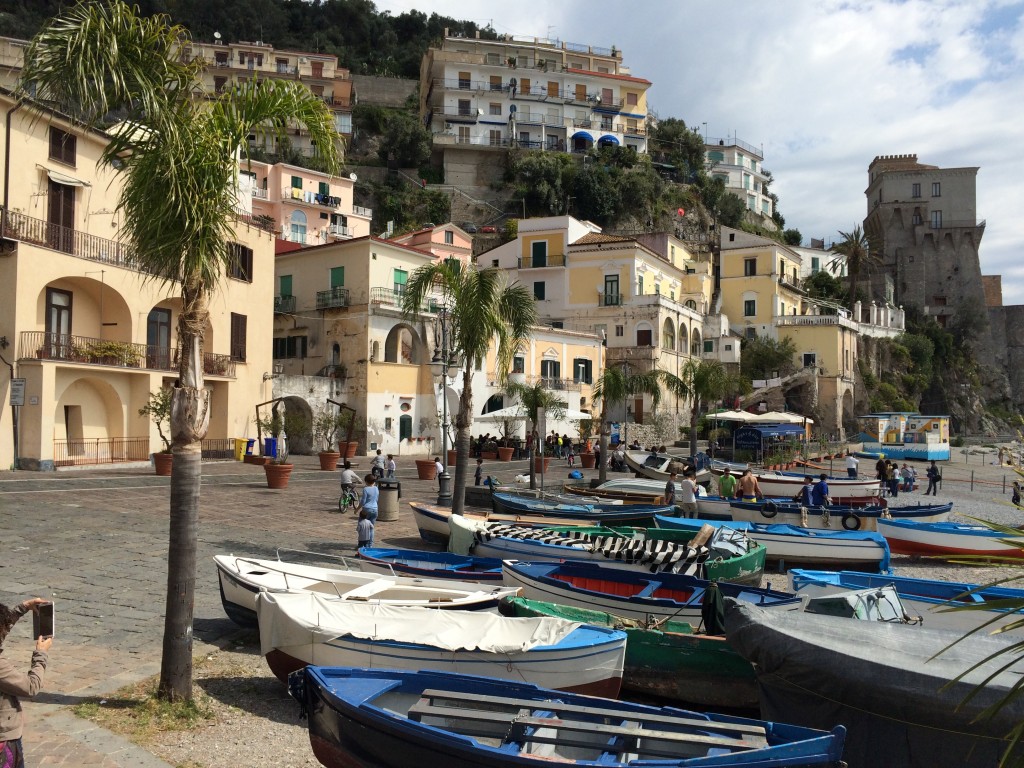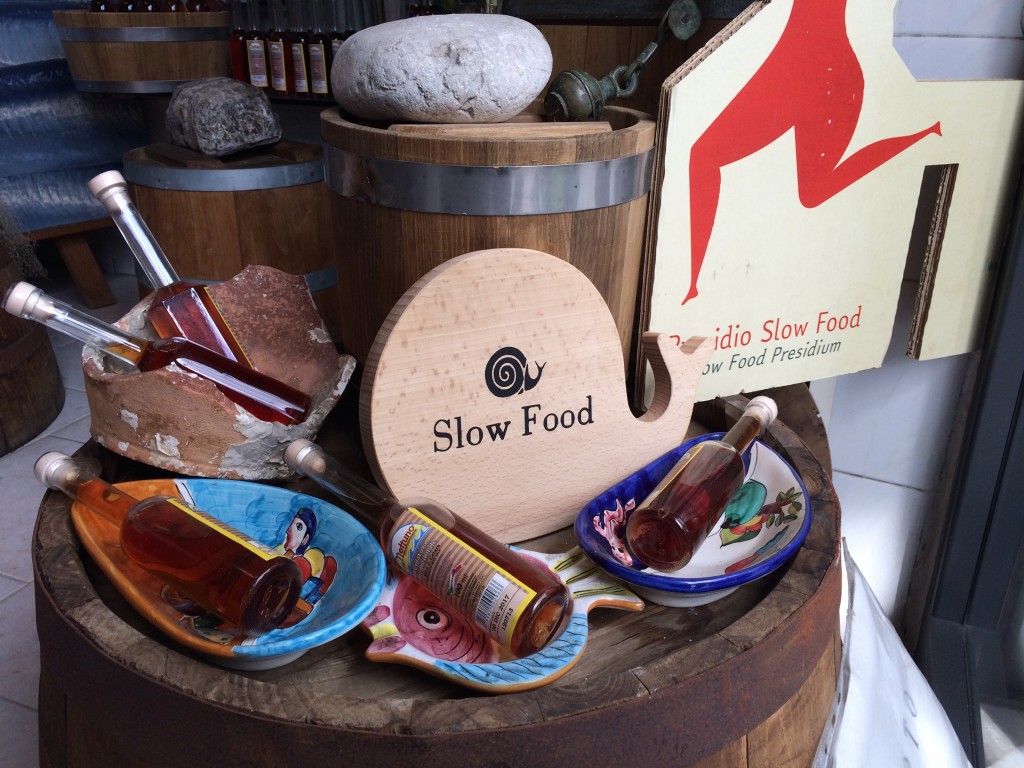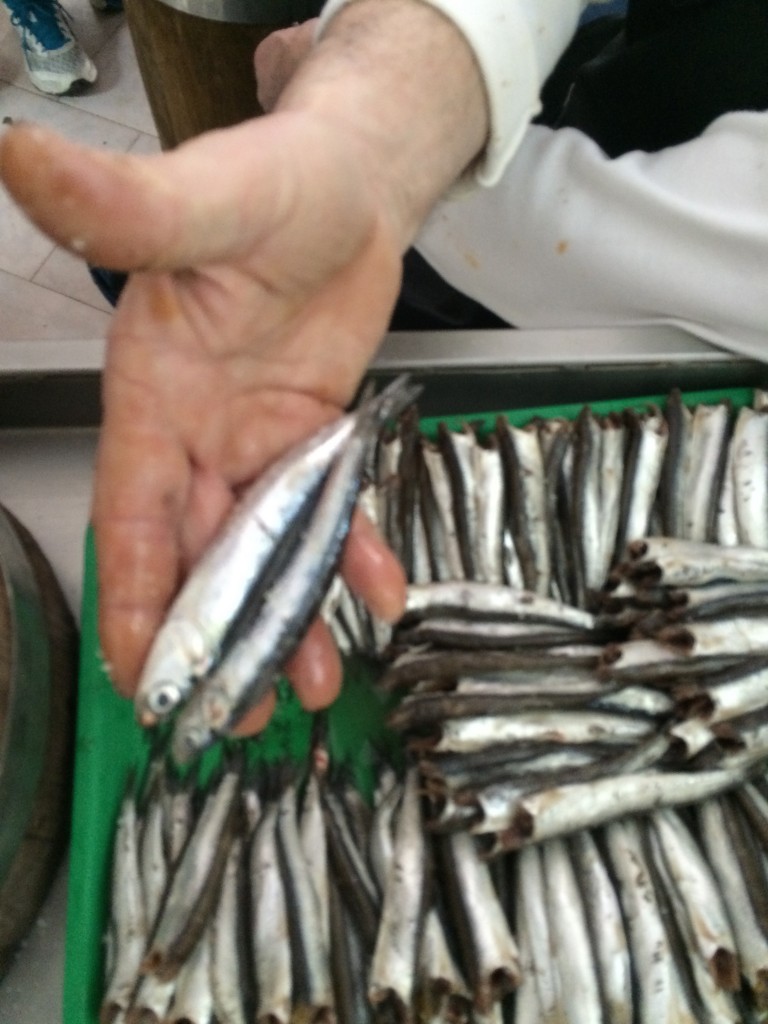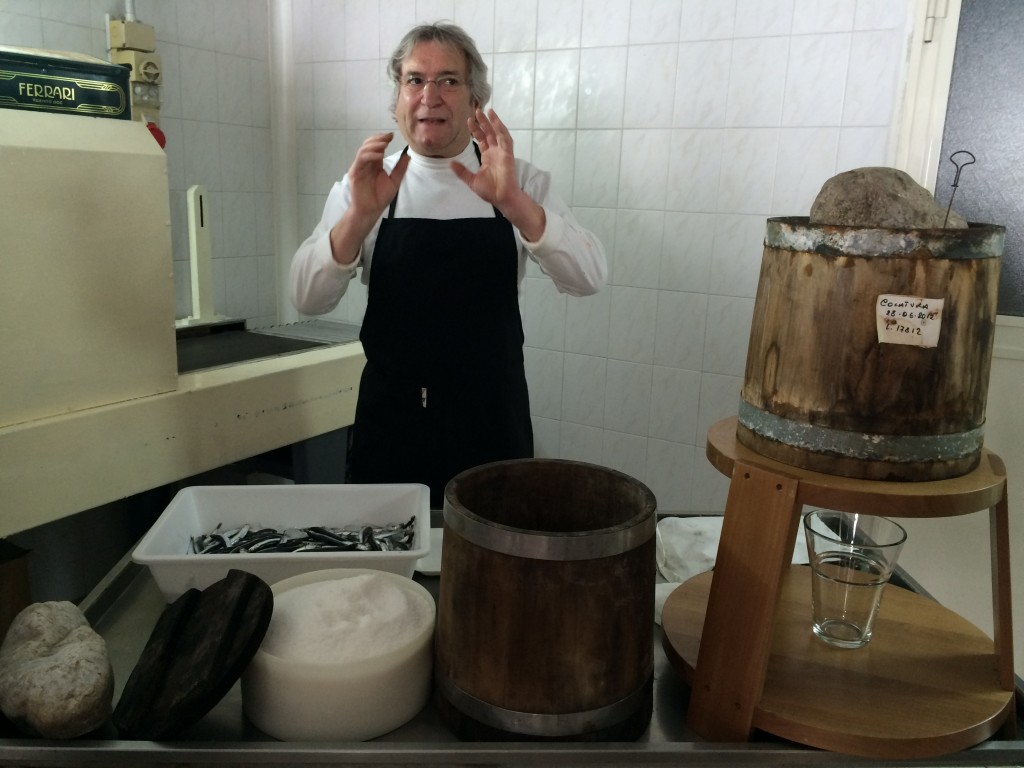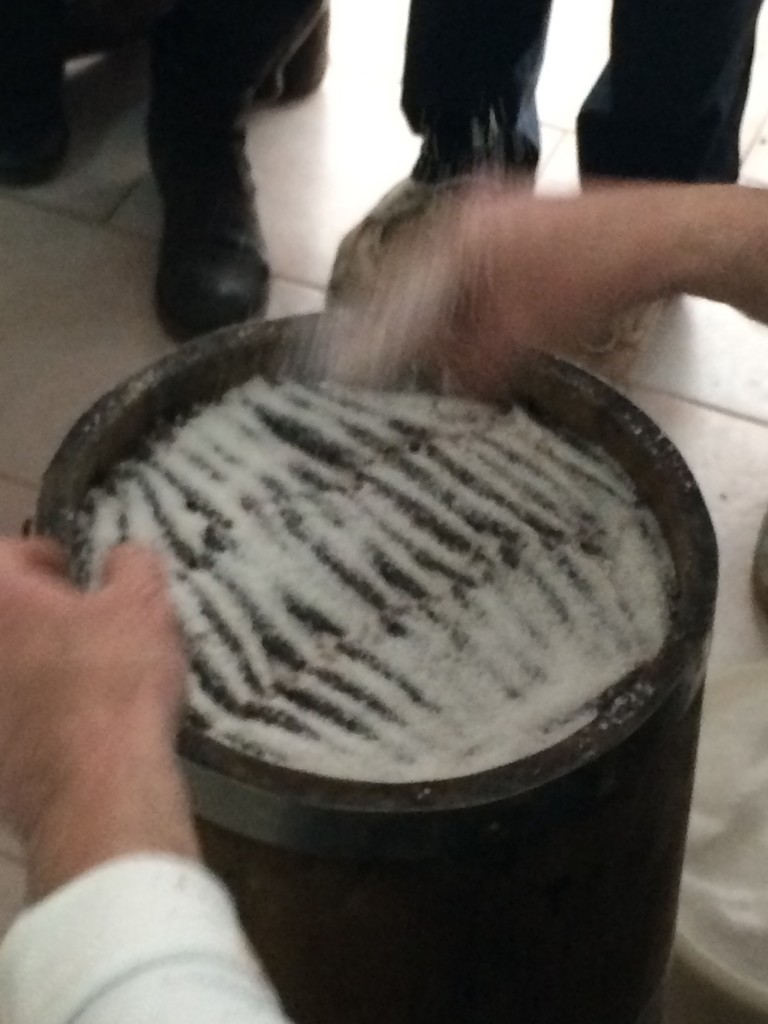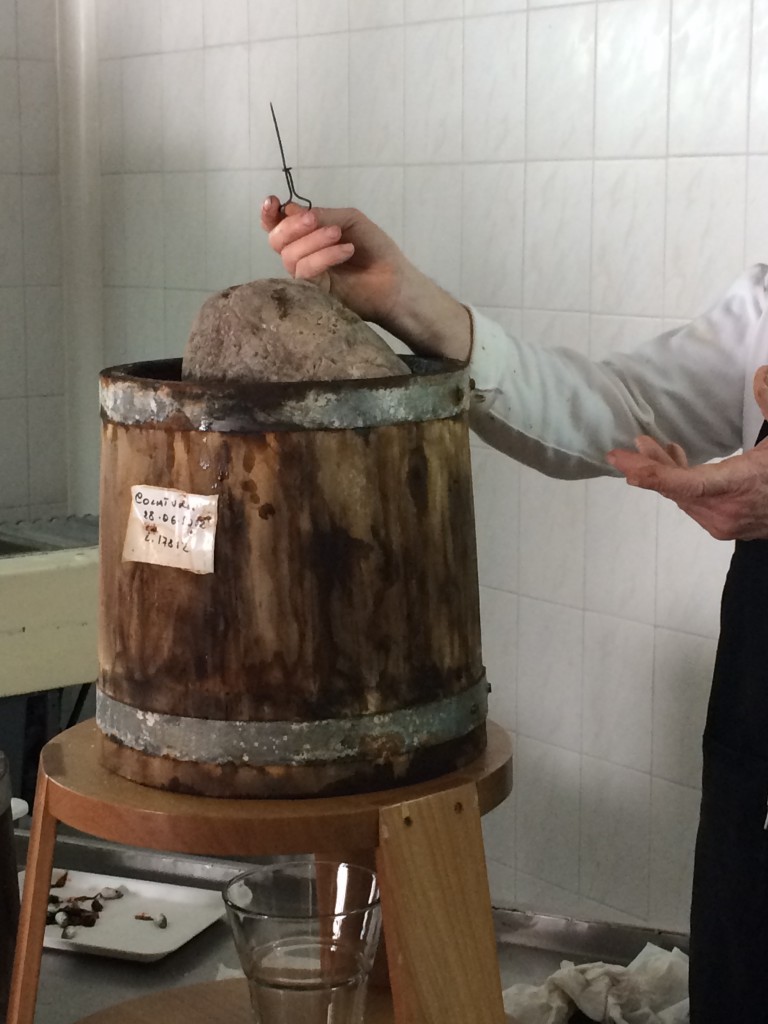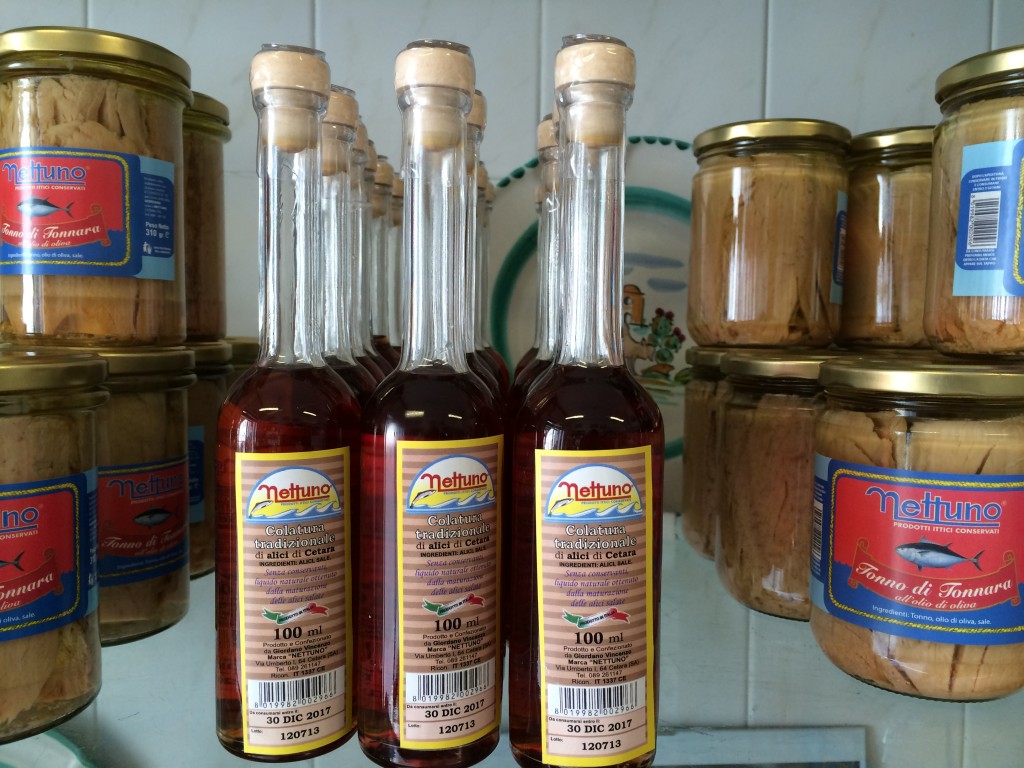Everything Old is New Again…
Giulio Nettuno was waiting for us at the front door of his Colatura Di Alici shop in the tiny fishing village of Cetara, south of Napoli, as we walked up the hill in the early morning sun.
“So who can’t stand the smell?” he asked, eyeing us with a cheeky grin, as we entered the shop.
Colatura is made by macerating fresh anchovies with salt to extract the very essence of anchovy -or pure yummy (umami) goodness – and the smell emanating from the shop might initially set you back a step or two.
“Che puzza di merda!” I heard a group of school kids cry out as they walked past.
As we followed Giulio through the shopfront and out the back, the smell became more intense.
We were here to learn how the colatura is made but before he started, Giulio had a question to put to us.
“Now who’s from New York?” he asked enthusiastically. Apparently he’d just found a new distributor there and beamed at the young women who put their hands up.
“I’ve had importers from New York and filmmakers from Japan here because they love this product,” he said. “But they want thousands of litres. I can only supply small boutiques.”
Colatura has become known internationally only in the last 20 – 30 years, but if you’ve heard of the Roman fish sauce, garum, a spicy fish sauce used as a condiment, you’ll know that colatura isn’t a recent invention.
Originally it was made by crushing and fermenting fish intestines such as tuna, eel, anchovies, and mackerel in salt. Because its production created such an unpleasant smell, garum was always made on the outskirts of cities.
Its production was very important to the citizens of Pompeii where amphorae have been recovered containing kosher garum. In 2008, archaeologists used the residue from garum found in containers in Pompeii to confirm the August date of the eruption of Mount Vesuvius.
“But during the middle ages, people forgot how to make it,” Giulio told us. “It was revived again in the 16th -17th centuries by local monks.
“When the fishermen had a big haul, they would give the excess to the monks, and the monks would preserve it under salt. They realised the water released by the fish was very tasty and started using it on vegetables.
“In Cetara, we always use colatura on December 8th (Feast of the Immaculate Conception), the day before Christmas and on New Year’s Day.”
A demonstration table had been set up with a couple of barrels, salt and anchovies, to show us how the fish is preserved.
“The Gulf of Salerno is deep and salty,” he told us. “The anchovies arrive at 5am. We take off their heads and remove the guts and then place them in small wooden chestnut barrels (terzini) in alternating circular rows sprinkling with salt as we go.
“There are six family members who work here. Some work really fast and can pack a barrel in an hour.
“Each packer ‘signs’ his name on the top with a different design using five anchovies. Then we put on the lid and weigh it down with a stone. Some of the stones have their own names – one even looks like a skull.
“We’ve been doing it like this for three generations.”
Giulio points out that some places add salt to the fish when the head is broken off. This yields more colatura, but not one with such a rich aromatic flavour. Average yield is 1.7 Litres colatura for 25Kg fish, though it depends on the catch.
April to August are the best months – that’s when the alice (anchovies) are full of flesh. Summer heat helps to trigger the fermentation process, then winter cools it down, followed by another summer and another winter: hot, cold, hot, cold.
After two years, they make a hole in the bottom of the barrel with a long thin utensil and the liquid trickles down, drop by precious drop, through the packed fish into a sterile container.
The glorious amber liquid is then ready to be bottled.
Giulio looks at us, sighs, and says with a big smile,
“It’s like giving birth.”
Giulio Nettuno will be at Slow Fish this month in Genoa, with his bottles of Colatura.
He has some suggestions, and a recipe, for using Colatura here.

